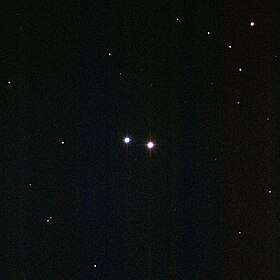M40 | NGC 4290 | Double Star | Ursa Major | 510 Light Years Away
Koehler in 1764 and later independently cataloged by Charles Messier in the same year, this celestial object stands out as a unique entry in Messier’s catalog. Positioned approximately 510 light-years away from Earth, Messier 40 is not a true astronomical object but rather a chance alignment of two stars along the same line of sight.
The two stars in Messier 40, designated Winnecke 4a and Winnecke 4b, are unrelated and not gravitationally bound. They have significantly different distances from Earth and exhibit distinct proper motions. Despite its unconventional status in Messier’s catalog, Messier 40 serves as a reminder of the challenges faced by early astronomers in distinguishing between true celestial objects and chance alignments. The study of Messier 40 contributes to our understanding of stellar astronomy and the intricacies of double star systems.
Messier 40 is a testament to the evolving nature of astronomical cataloging and the ongoing refinement of our knowledge about the night sky. While not a traditional deep-sky object, its inclusion in Messier’s catalog reflects the historical context of early astronomical observations and the dedication of astronomers to systematically document and study the cosmos. The story of Messier 40 adds an interesting layer to the narrative of celestial discoveries, reminding us of the complexities involved in unraveling the mysteries of the universe.

